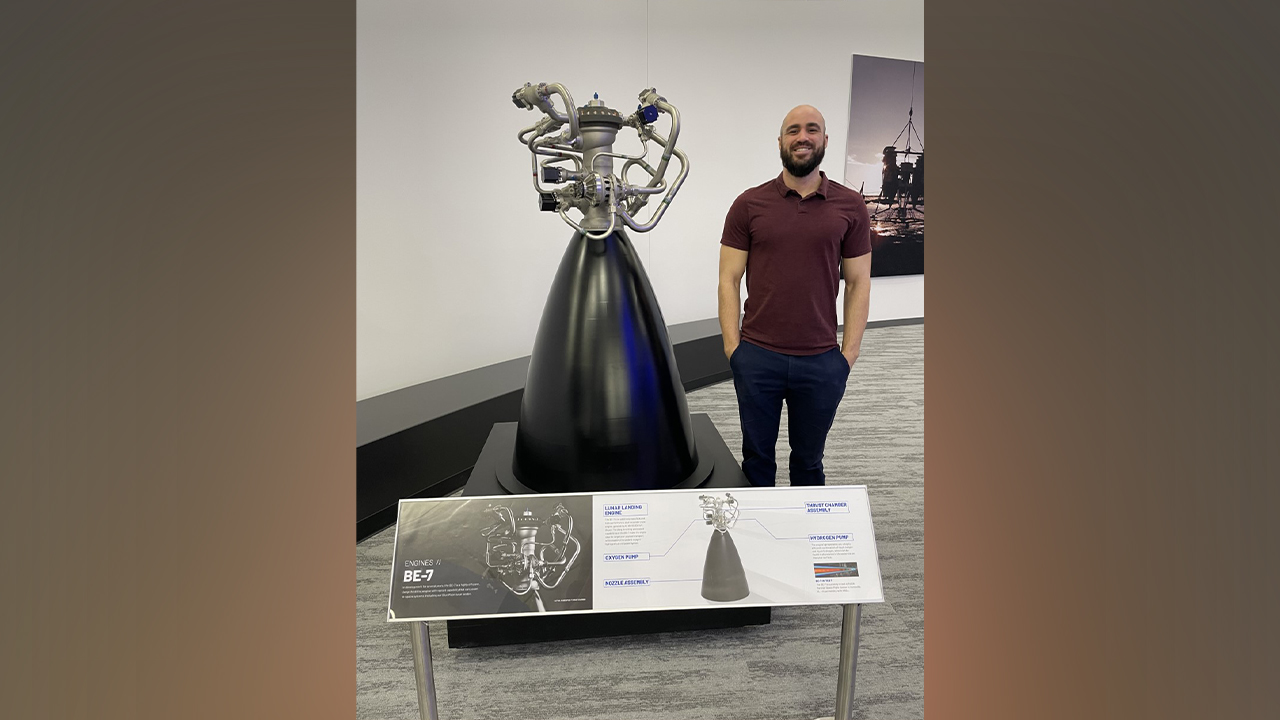
Dr. Marcus Jackson ’14 likens the feeling he gets working at Blue Origin to that of the early railroad workers.
“I really feel like I am contributing to the infrastructure of the future,” he said.
With Blue Origin’s overarching mission of building a road to space, it’s easy to see why.
Jackson, originally from Elk Grove, California, graduated from UW-Platteville with a degree in mechanical engineering and then attended graduate school at UW-Madison. During his six years at UW-Madison, he was a part of NASA’s Pathways Internship Program, through which he spent his summers working at the NASA Ames Research Center in California. Jackson’s specialty is additive manufacturing. He studied energy consumption, process improvements, and repair and re-manufacturing applications. While at NASA, he explored how these types of technologies can be used in space applications, like habitation on the moon or Mars.
Over a year ago, Jackson took on a new challenge when he joined Blue Origin as a Materials and Process Engineer. He is part of a team of engineers building rocket engines, and he uses additive manufacturing to make engine components.
“My job is to make sure that when we are adding additive manufacturing components, they are of the highest quality possible and withstand the rigors of being in a rocket engine,” said Jackson.
Jackson said he loves working in this position and being a pioneer in an industry that has so much to explore. This is especially true for someone, like him, who grew up—and still is—fascinated by space.
“I still have a sense of adventure with outer space,” said Jackson. “I am fascinated by all the discoveries we make. I love reading science fiction.”
Jackson said working in the industry—whether at NASA or now at Blue Origin—and contributing to history being made drives his passion for the job.
“It’s very internally rewarding and motivating and makes me want to get up and go in the morning,” he said. “When I was at NASA, one mission I was on was developing a moon rover to take samples of water and moon ice. That’s a really easy way to get up in the morning. I would love for humanity to expand into the greater universe; that’s such an amazing goal. The work I’m doing will pay off for my children’s children. I truly believe that, and it’s inspiring to go to work every day.”